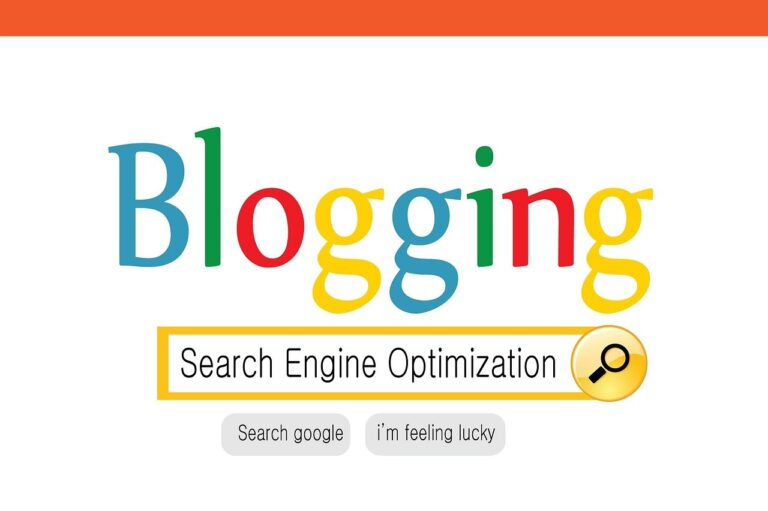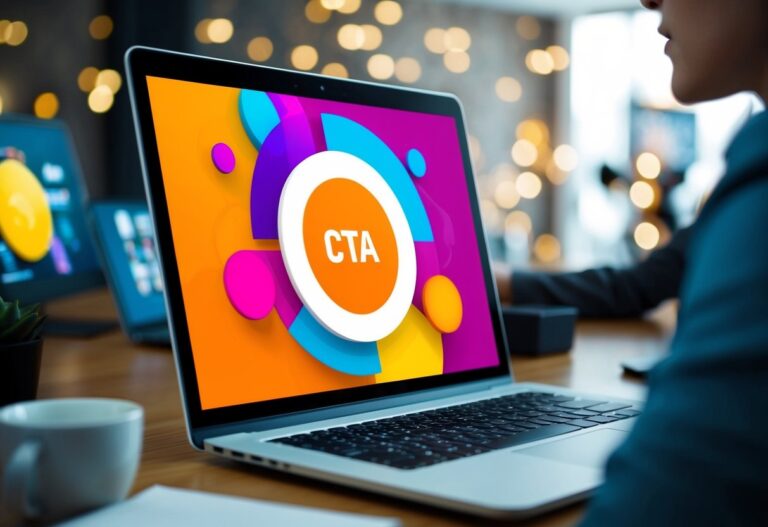Effective communication is crucial for holistic practitioners to provide quality care and build trust with their clients. However, language barriers, cultural differences, and complex medical terminology can hinder the exchange of vital information.
Implementing strategies to overcome these obstacles can significantly enhance the practitioner-client relationship and improve health outcomes.

Holistic practitioners can employ various techniques to bridge communication gaps. Active listening, nonverbal cues, and simplifying complex health concepts are powerful tools in fostering understanding.
By developing cultural competency and adapting communication styles, practitioners can create a more inclusive and supportive environment for their diverse clientele.
Key Takeaways
- Develop cultural competency to enhance communication with clients from diverse backgrounds.
- Utilize active listening and nonverbal cues to improve understanding and build rapport.
- Simplify complex health concepts to ensure clear and effective information exchange.
Understanding Communication Barriers In Holistic Practice
Effective communication is crucial in holistic healthcare. Practitioners often encounter obstacles that can hinder the therapeutic relationship and impact treatment outcomes.
Recognizing and addressing these barriers is essential for providing optimal care.
Common Barriers Faced By Holistic Practitioners
Language differences pose a significant challenge in holistic practice. When you and your patient don’t share a common language, misunderstandings can occur.
Cultural variations in health beliefs and practices may also lead to communication gaps.
Nonverbal cues can be misinterpreted across cultures, affecting the therapeutic bond. Meanwhile, jargon and technical terms may confuse patients unfamiliar with holistic concepts.
Time constraints during consultations can limit in-depth discussions. Patients may feel rushed and unable to fully express their concerns. Environmental factors like noisy waiting areas or lack of privacy can also impede effective communication.
The Impact Of Poor Communication On Treatment Outcomes
Miscommunication can lead to incorrect diagnoses and treatment plans. When you fail to understand your patient’s symptoms or concerns fully, you may miss crucial information for proper care.
Poor communication can decrease patient satisfaction and trust. This may result in reduced adherence to treatment recommendations and follow-up appointments. Patients might seek alternative care or discontinue treatment altogether.
Ineffective communication can also increase the risk of medical errors. Misunderstandings about dosage instructions or lifestyle changes can lead to complications. Your ability to educate patients about self-care practices may be compromised, affecting long-term health outcomes.
Techniques For Active Listening
Active listening is a crucial skill for holistic practitioners to master. It involves fully engaging with the speaker, understanding their message, and responding thoughtfully.
By employing specific techniques, you can enhance your ability to listen actively and effectively.
The Importance Of Active Listening In Holistic Health
Active listening forms the foundation of effective communication in holistic health practices. When you truly hear what another person has to say, you create a space for healing to begin.
This skill allows you to gather accurate information about your clients’ concerns and build trust.
By actively listening, you demonstrate respect and empathy, which are essential in holistic care. This approach helps you:
- Identify underlying issues
- Tailor treatments more effectively
- Foster a stronger practitioner-client relationship
Your ability to listen actively can significantly impact the success of your treatments and the overall satisfaction of your clients.
Practical Steps To Enhance Active Listening Skills
To improve your active listening skills, consider implementing these techniques:
- Pay full attention to the speaker, avoiding distractions like phones or other devices.
- Use non-verbal cues such as nodding and maintaining eye contact to show engagement.
- Practice mindful listening by focusing on the present moment and the speaker’s words.
Paraphrase and summarize what you’ve heard to ensure understanding. Ask open-ended questions to encourage further explanation.
These steps help you gather more information and show your client that you value their input.
Overcoming Common Active Listening Challenges
Active listening can be challenging, especially in busy healthcare environments. Common obstacles include:
- Distractions from external sources
- Personal biases or preconceptions
- Time constraints
To overcome these challenges, create a quiet, comfortable space for client interactions. Be aware of your own biases and focus on interpreting tone and body language along with words.
Practice patience and allow clients sufficient time to express themselves fully. If time is limited, communicate this respectfully and schedule follow-up sessions as needed.
By addressing these challenges, you can consistently provide high-quality, attentive care to your clients.
Mastering Nonverbal Communication
Nonverbal communication plays a crucial role in practitioner-client interactions. Mastering these unspoken cues can significantly enhance your ability to connect with clients and provide more effective care.
The Role Of Nonverbal Cues In Practitioner-Client Interactions
Your body language and facial expressions convey powerful messages to clients. Nonverbal communication can be more meaningful than verbal communication in many situations.
Maintaining eye contact demonstrates attentiveness and builds trust. Your posture affects how clients perceive your confidence and competence.
Gestures can emphasize key points and make your communication more engaging. The tone and pace of your voice influence how clients interpret your words. Meanwhile, touch, when appropriate and culturally sensitive, can convey empathy and support.
Be mindful of your facial expressions, as they can reveal your emotions and reactions. A warm smile can put clients at ease, while a furrowed brow might indicate concern or confusion.
Techniques To Improve Nonverbal Communication
To enhance your nonverbal skills, practice self-awareness. Pay attention to your own body language and how it might be perceived.
Mirror positive signals from your clients to build rapport and make them feel more comfortable.
Maintain an open posture by keeping your arms uncrossed and your body facing the client. Use appropriate hand gestures to illustrate your points, but avoid excessive movement that could be distracting.
Modulate your voice to convey empathy and understanding. Speak clearly and at a pace that allows clients to process information easily. Practice active listening by nodding and using minimal verbal encouragers.
Respect personal space while still maintaining a connection. Be aware of cultural differences in acceptable distances and touch.
Recognizing And Interpreting Client Nonverbal Signals
Observing your clients’ nonverbal cues can provide valuable insights into their emotions and thoughts. Watch for changes in facial expressions, which can indicate shifts in mood or discomfort with certain topics.
Pay attention to your clients’ posture and body orientation. Leaning forward often signals engagement, while leaning back might indicate skepticism or a need for space. Meanwhile, crossed arms could suggest defensiveness or discomfort.
Notice inconsistencies between verbal and nonverbal messages. If a client says they’re fine but displays tense body language, it may warrant further exploration.
Listen for changes in voice tone or speaking pace, as these can reveal underlying emotions. Be attuned to sudden gestures or movements that might indicate stress or anxiety.
Simplifying Complex Health Concepts

Simplifying complex health concepts is essential for effective communication in holistic practice. Clear explanations help patients understand their health issues and treatment options better, leading to improved outcomes and trust.
Why Simplification Is Crucial In Holistic Health
Simplification makes health information more accessible to patients from diverse backgrounds. When you break down complex topics, you empower patients to make informed decisions about their care.
Simplified explanations reduce anxiety and confusion, promoting better patient engagement. Clear communication also helps build trust between practitioners and patients.
By avoiding medical jargon, you create a more inclusive environment. This approach is particularly important in holistic health, where treatments often involve unfamiliar concepts to many patients.
Strategies To Explain Complex Concepts Clearly
Use analogies and metaphors to relate complex ideas to everyday experiences. For example, compare the immune system to a well-trained army defending a country.
Break down information into smaller, digestible chunks. Present one concept at a time and build upon it gradually.
Utilize visual aids like diagrams, charts, or models to illustrate complex processes. Visual representations can help patients grasp difficult concepts more easily.
Encourage questions and provide simple, direct answers. Be patient and willing to rephrase explanations if needed.
Adopt innovative strategies to overcome language barriers, especially when working with non-native English speakers.
Tools And Resources For Effective Communication
Employ patient education materials like brochures, handouts, or digital resources. These tools reinforce verbal explanations and provide reference points for patients.
Use health literacy assessment tools to gauge patients’ understanding levels. Tailor your communication style accordingly.
Leverage technology such as interactive apps or videos to explain complex health concepts. These can be especially helpful for visual learners.
Consider using teach-back methods, where patients explain concepts in their own words. This approach helps you identify areas that need further clarification.
Collaborate with interpreters or cultural mediators when working with diverse patient populations. This ensures accurate communication across language and cultural barriers.
Building Strong Practitioner-Client Relationships

Strong relationships between holistic practitioners and their clients form the foundation of effective care. Trust, personalized communication, and ongoing feedback create an environment where clients feel heard, valued, and empowered in their healing journey.
Establishing Trust And Rapport
Building trust starts from the first interaction. Greet clients warmly and maintain eye contact to show genuine interest. Practice active listening by giving your full attention and avoiding interruptions.
Demonstrate empathy towards clients’ concerns and experiences. Validate their feelings without judgment. Be transparent about your qualifications, treatment approaches, and expected outcomes.
Maintain confidentiality and respect boundaries. Create a safe, comfortable environment where clients feel at ease sharing personal information. Use open-ended questions to encourage dialogue and deeper understanding of their needs.
Consistency in your approach builds credibility over time. Follow through on commitments and be punctual for appointments. Address any concerns or misunderstandings promptly and professionally.
Tailoring Communication To Individual Client Needs
Recognize that each client has unique communication preferences and needs. Assess their health literacy level and adjust your language accordingly. Avoid jargon and explain complex terms when necessary.
Consider cultural backgrounds and adapt your communication style respectfully. Be aware of non-verbal cues and body language that may indicate comfort or discomfort.
Use visual aids, diagrams, or written materials to support your explanations when appropriate. Encourage questions and provide clear, concise answers.
For clients with specific challenges, such as hearing impairments or language barriers, utilize appropriate tools or interpreters to ensure effective communication.
Continuous Improvement And Feedback Mechanisms
Implement regular check-ins with clients to gauge their satisfaction and progress. Create opportunities for them to provide feedback, both formally and informally.
Use surveys or questionnaires to gather specific insights about your communication effectiveness. Analyze this data to identify areas for improvement.
Engage in ongoing professional development to enhance your communication skills. Attend workshops, read current research, and practice new techniques.
Encourage open dialogue about treatment plans and outcomes. Be receptive to clients’ suggestions and concerns. Demonstrate flexibility in adjusting your approach based on their feedback.
Collaborate with other practitioners to share best practices and learn from their experiences. This interdisciplinary approach can provide valuable insights for improving client relationships.
Conclusion

Effective communication is crucial for holistic practitioners to provide quality care. By implementing the strategies discussed, you can overcome common barriers and enhance your interactions with patients. Remember to actively listen and practice empathy. These skills help build trust and rapport with your clients.
Cultural competence is key. Educate yourself about diverse backgrounds and adapt your approach accordingly. This fosters culturally sensitive communication in healthcare settings.
Utilize clear, jargon-free language when explaining concepts. Visual aids and written materials can reinforce your verbal instructions.
Develop your interprofessional communication skills. Collaborating effectively with other healthcare providers ensures comprehensive patient care.
Regularly assess and improve your communication techniques. Seek feedback from patients and colleagues to identify areas for growth.
By prioritizing these strategies, you’ll create a more inclusive and effective healing environment. Your enhanced communication skills will lead to better patient outcomes and satisfaction.
Frequently Asked Questions

Effective communication in healthcare requires addressing language barriers, cultural differences, and safety concerns. Holistic practitioners can employ various strategies to enhance patient interactions and improve overall care quality.
What strategies can healthcare providers employ to overcome language barriers with patients?
Healthcare providers can use professional interpreters to facilitate accurate communication. Visual aids and translated materials help convey important information. Providers should speak slowly and clearly, avoiding medical jargon. Encouraging patients to ask questions ensures better understanding.
What approaches contribute to mitigating cultural barriers in healthcare communication?
Cultural competency training is essential for healthcare providers. Understanding diverse health beliefs and practices improves patient rapport. Providers should ask about cultural preferences and adapt care accordingly. Using culturally appropriate examples and explanations enhances comprehension.
How can healthcare practitioners improve communication for patient safety?
Practitioners should use clear, simple language when explaining procedures and medications. Implementing teach-back methods confirms patient understanding. Regular team meetings and standardized communication protocols reduce errors. Encouraging patients to voice concerns creates a safer environment.
What are effective methods for holistic practitioners to transcend communication challenges in their practice?
Holistic practitioners can employ active listening techniques to understand patients’ needs fully. Creating a welcoming, judgment-free environment encourages open communication. Using multiple modalities, such as verbal explanations and written instructions, caters to different learning styles. Regularly assessing communication effectiveness allows for continuous improvement.
How do communication barriers affect the quality of healthcare received by patients?
Communication barriers can lead to misdiagnosis and inappropriate treatment plans. Patients may struggle to understand and follow medical advice, impacting adherence. Barriers can cause frustration and mistrust, potentially resulting in delayed care-seeking. Effective communication is crucial for patient-centered care and positive health outcomes.
What key steps can be taken to minimize miscommunication in multi-lingual healthcare settings?
Implementing a language identification process upon patient intake ensures appropriate language support.
Providing multi-lingual signage and informational materials improves navigation and understanding.
Training staff in basic phrases of commonly spoken languages can enhance initial interactions.
Utilizing technology like translation apps can provide quick assistance when interpreters are unavailable.






